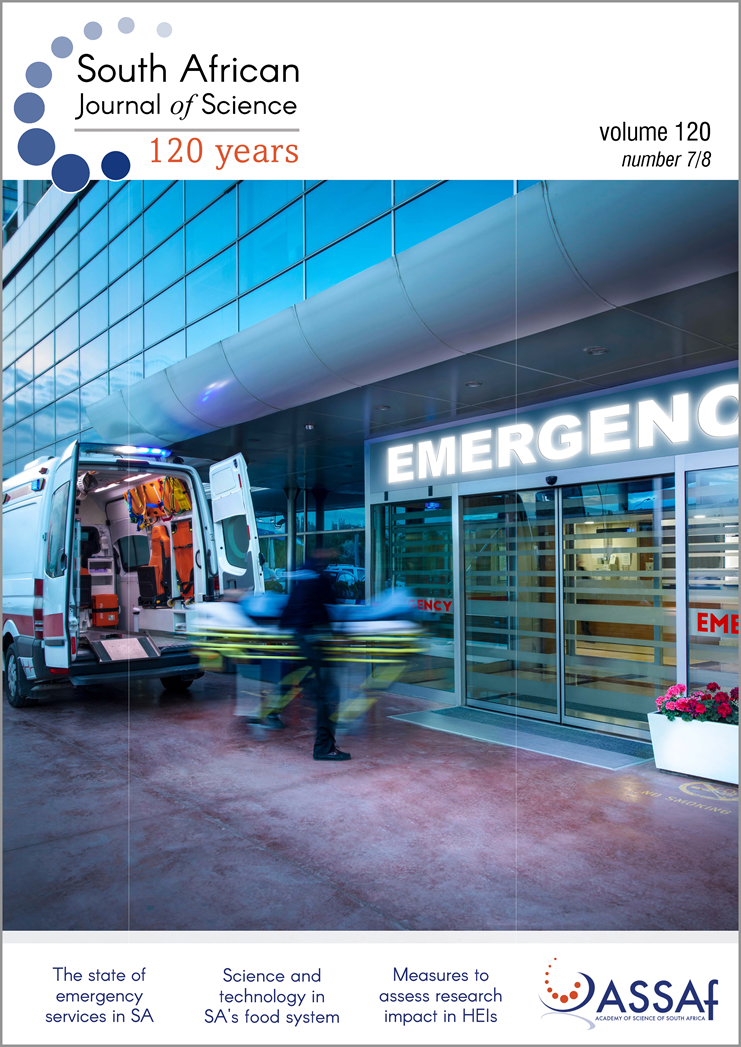Climate change adaptation and disaster risk reduction in South Africa’s local municipal plans
DOI:
https://doi.org/10.17159/sajs.2024/15797Keywords:
climate change adaptation, disaster risk reduction, social vulnerability reduction, resilience building, municipal plansAbstract
Climate change adaptation (CCA) and disaster risk reduction (DRR) agendas converge in their priorities to reduce social vulnerability and enhance resilience in the face of climate change. However, they are often treated separately in practice and in local government plans. In South Africa, while municipalities are legally mandated to develop Integrated Development Plans (IDPs) and Disaster Management Plans (DMPs), this is not the case for CCA. In this study, we assessed the engagement with, and linkages between, CCA and DRR in 20 local municipalities from contrasting socio-economic contexts in the Eastern Cape Province of South Africa by conducting an analysis of their IDPs, DMPs and any plans or strategies pertaining to CCA. Our results show that none of the municipalities had separate CCA strategies, with only two municipalities complying with the mandate to have DMPs. While municipalities mostly included CCA- and DRR-related activities in their IDPs, there were no explicit linkages made between the two approaches. Apparent was the prioritisation of bolstering infrastructure with little attention towards addressing social vulnerability and building resilience. Overall, little has been done to prioritise or link CCA and DRR at the local government level, especially in the context of addressing social vulnerability and building resilience. These findings suggest the need for South Africa to implement and promulgate legal instruments, policies and resources to capacitate local municipalities in mainstreaming and integrating CCA and DRR.
Significance:
- This study highlights that, while CCA and DRR converge in theoretical frameworks and international and national policies, little has been done to link the two at the local government level in South Africa.
- Overall, findings indicate that social vulnerability reduction and resilience building are still not recognised as important aspects of CCA and DRR.
- Local municipalities prioritise technical solutions and infrastructure maintenance, with little attention to development and structural causes of vulnerability.
- Support, in terms of resources, is needed to capacitate local municipalities in (1) linking CCA and DRR and (2) reducing social vulnerability and building resilience.
Downloads
Additional Files
Published
Issue
Section
License

All articles are published under a Creative Commons Attribution 4.0 International Licence
Copyright is retained by the authors. Readers are welcome to reproduce, share and adapt the content without permission provided the source is attributed.
Disclaimer: The publisher and editors accept no responsibility for statements made by the authors
How to Cite
- Abstract 840
- PDF 356
- EPUB 264
- XML 169
- Supplementary material 258
- Peer review history 29













.png)